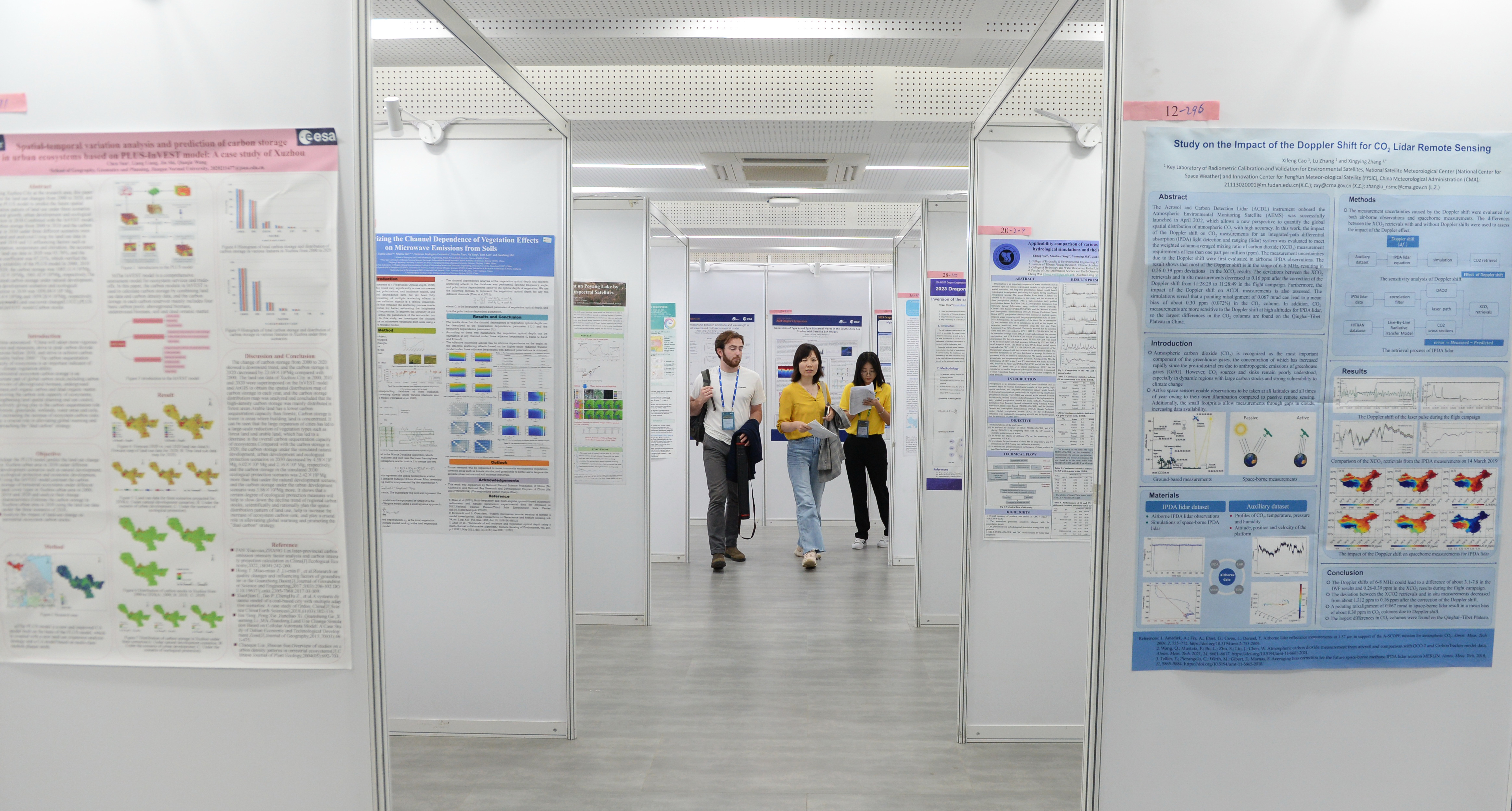Dragon Programme Takes Remote Sensing to New Level

Young scientists at a session of the 2023 Dragon 5 symposium. (PHOTO: ZHOU Weihai/S&T Daily)
By QI Liming
In 2004, China's Ministry of Science and Technology (MOST) and the European Space Agency (ESA) launched the Dragon Programme, a science and technology research cooperation in the field of Earth observation.
Implemented by the National Remote Sensing Center of China (NRSCC) and the European Space Research Institute (ESRIN), four phases of the Dragon Programme have been completed so far, each phase lasting four years. Dragon 5 was launched in 2020. The 2023 Dragon 5 Symposium held in Hohhot, north China's Inner Mongolia autonomous region, from September 11 to 15, summarized the results of three years of the Dragon 5.
Long history of cooperation
Today the Dragon Programme is the platform with the largest number of participating countries, teams and personnel in China-EU remote sensing sci-tech cooperation, with the broadest coverage of research fields.
Josef Aschbacher, director general of ESA, said in his video address that advancing science and finding common solutions to common problems and global issues can only be done through global cooperation. "ESA and its member states are therefore strong supporters of initiatives like the Dragon Programme, … pulling leading researchers from Europe and China to work together to find common solutions benefiting scientists both in China and in Europe," he said.
Zhang Yudong, Chinese vice minister of science and technology, said in his video address, "Scientific and technological cooperation between China and Europe has a long history in extensive areas. The Dragon Programme is an important part of the China-EU comprehensive strategic partnership of cooperation. I hope that we both take this opportunity to broaden the fields and channels of cooperation, promote further exchanges between researchers from both sides, and continuously improve mechanisms and platforms for scientific and technological cooperation."
Under the Dragon Programme, China and the EU have carried out extensive and in-depth cooperation in remote sensing applications, technical training, academic exchanges and data sharing. They have explored a scientific and technological cooperation mechanism for governments to build platforms and scientists to participate independently and share Earth observation data. This has not only enhanced the technical level and capabilities of both sides in remote sensing applications, but also become a model of scientific and technological cooperation between them.
An important model of reference
Since its launch 19 years ago, the Dragon Programme has witnessed the participation of over 1,100 Chinese scientists and nearly 1,000 scientists from European countries.
Simonetta Cheli, head of ESRIN and director of Earth Observation Programme, called international cooperation essential for ESA. "It is also essential to be able to address the concerns, such as climate issues," she said via video, adding, "The Dragon Programme, since 2004, has shown to be a very important model of reference in achieving these subjects. In this light, I believe the cooperation will continue between ESA and MOST, and the Dragon 6 will continue as scheduled."
Xu Jie, deputy director general of the International Cooperation Department of MOST, said at the symposium, "After 19 years of collaboration, the Dragon Programme has proved to be a platform for China and Europe to collaborate on academic exchange, technical training and joint research, and has been highly valued by the involved scientists."
Scientists from both sides have carried out joint research on remote sensing applications in the fields of solid earth, ocean and coastal zones, and atmospheric sciences, creating a unique platform for China-EU high-tech cooperation in remote sensing.
Cultivating young researchers
Nearly 80 percent of the Chinese experts participating in Dragon Programme are under the age of 45. Through cooperative research with many top international scientists in Europe, a large number of them have become technical leaders.
Rune Floberghagen, head of the Science, Applications and Climate Department at ESA, called "the Dragon cooperation" a success. "I personally would like to make a particular welcome to the young scientists here in the audience," he added. "Not only are you the future of science, but in the preparation of this symposium. From the perspective of the Dragon offices of ESA and NRSCC, we actually want to highlight the important role that young scientists have within the Dragon Programme."
Liu Zhichun, deputy director general of NRSCC, said "through the Dragon Programme, China and Europe have established a joint research team on Earth observation, which has achieved a large number of research results and greatly promoted the improvement of Earth observation technology." Liu hoped the meeting would promote the development of remote sensing technology for application.






